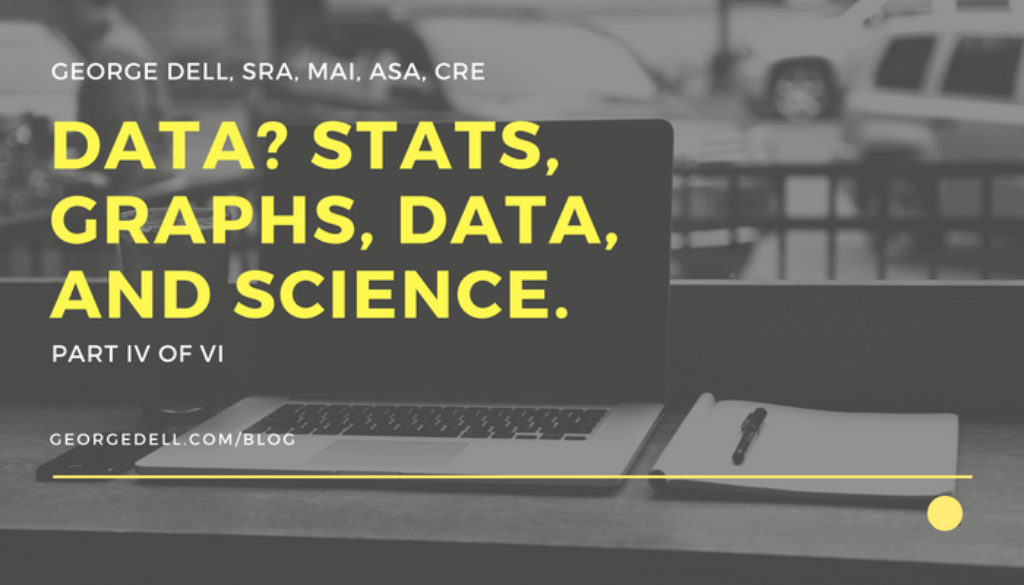Part IV of VI:
Data is data. It becomes useful in only two ways. Simple, huh?
Appraisers and asset analysts add value to data by a systematic process. The analysis turns data into useful information. The information can then become knowledge, useful for making a decision. Analyst judgment is still required. The judgment is improved with understanding the underlying science.
We will discuss how data becomes useful in parts V and VI of this six-part series on Stats, Graphs, Data, and Science. We need to really understand some things about the nature of data.
It’s important to understand data basics because the type of data has everything to do with how it can be analyzed, visualized and presented. It is also important to understand that the levels of data are different from the types of data, as well as the different ways in which computers handle data types.
For the asset analyst, data levels are the way to think critically and get the best understanding from whatever and however the data shows up. There are four data levels: nominal, ordinal, interval, and ratio. Each of these strongly influence how we make modeling decisions:
| Nominal (name) | Qualitative | Can only be counted |
| Ordinal (order) | Qualitative | Can also be put in sequence |
| Interval (even spacings) | Quantitative | Can also be added/subtracted |
| Ratio (true zero) | Quantitative | Can also be multiplied/divided |
You might compare these “analytic” data levels to common basic (atomic) ways in how a computer sees them: integers (whole numbers), Booleans (0 and 1), characters (alphabetic), floating-point numbers (decimal point moveable), and alphanumeric strings (letters and numbers).
R enables some larger, useful data types, like: vector (a row or column); matrix (a table with same data types); an array (matrix of 3+ dimensions); data frames (different data types); lists (ordered collection), and; factors (categorical).
This may seem daunting, but in practice, appraisers already know intuitively how to deal with such stuff! As an analyst, what’s important are the data levels. These put the appraiser brain into clarity of action, and decision and modeling.
The four levels of data are important to the appraiser/analyst in three ways. First, the data level initially determines what type of models are possible and helps the analyst make some important modeling decisions:
- Whether to use descriptive summary numbers or not;
- What type of analysis (“statistics”) can work;
- What type of graph(s) assist the human modeling brain, and the decision maker’s brain;
- When transforming the data level might help.
Transforming the data from one type to another is an important part of the analyst/modelers job. It takes the subject matter expert – the appraiser – to make these decisions. Computers are really good at algorithms. The human brain is really good at model selection.
Data is the starting point. It becomes information with the three basic analytical tools. Part V of this series will look at the three simple but powerful tools to extract information from data — how data analysis came to be data science.
